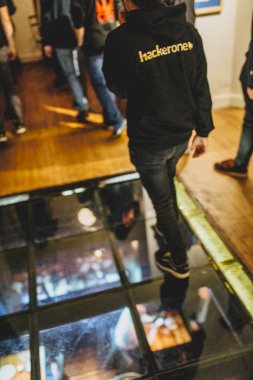Source: www.hackerone.com – Author: Pamela Greenberg.
Join us as Pamela Greenberg expands on metal health questions from our H1 Community!
- What is Doomscrolling
- Confirmation Bias ft. Doomscrolling
- Tools and suggestions to overcome
Question: “I spend the majority of my time researching and keeping up with current affairs. I don’t feel like anything is wrong, but then I find myself unable to move for hours. I will be sitting there on rotating through my apps. Why does this happen and what should I do when experiencing this?”
What is DoomScrolling?
Many people become bound to their research or a newsreel. Our digital experience creates artificial pressure to keep up with social media, work, and online news. The overwhelming amount of fresh information available can take its toll. Our experiences become compiled into a negative cycle of upkeep and maintenance known as “Doomscrolling.” We will spend hours diving into information that causes us stress, but why are we like this? What are the actual adverse effects of these actions? Well, let’s start at the beginning.
Our brains are predisposed to attune to harmful or dangerous stimuli, which we can attribute to early humans’ need for survival in predator-rich environments– if your brain were not attuned to danger, you’d get eaten.
However, our modern brains don’t know the difference between being stalked by a predator in the jungle and reading a string of stressful news articles. Taking in a lot of negative information can put us in a repeated or extended fight or flight response, releasing stress hormones and activating our nervous system. Similar to if we were facing an actual threat to our physical safety (fight or flight syndrome). Exposure to constant fight or flight is what leads us to exhaustion from our anxiety. But why does the cycle continue?
Confirmation Bias ft. Doomscrolling
Our brains are prone to thought biases like “Confirmation Bias.” Having confirmation bias means we become more likely to seek evidence that supports what we already believe rather than neutrally taking in the evidence. We try to keep negative conclusions with more negative stimuli to confirm our worldview.
Doomscrolling and confirmation bias work hand-in-hand. Suppose you’re already feeling depressed or anxious. In that case, confirmation bias may cause a cycle of media consumption that enables you to find reasons to continue feeling down or worried—in other words, confirming that you are right to feel so hopeless. We can experience this when looking at current events, comparing our work to others, or panicking about a skill you’re not immediately picking up.
The increased fight or flight response that doomscrolling can activate and the amount of screen-time involved can also interfere with our ability to sleep- completing our vicious cycle.
A lack of sleep can make us vulnerable to depression and anxiety, making us more susceptible to confirmation bias when we consume media, which leads to that fight or flight activation, making it harder to sleep.
Can you see how this becomes problematic fast? So, what can you do instead of consuming media in a way that leads to the difficulties described here?
Adjustments and Tools
Well, it might be helpful to limit the time you spend reading the news, looking at specific sites, or researching certain topics. Rather than letting this behavior go on for hours, set alarms to keep yourself within a boundary that feels right for you. Whether it’s just for one hour- once a day, or twenty minutes two or three times a day. You can build a schedule and hold control over the outcome. In the end, you can still stay informed but prevent yourself from crossing the threshold between a responsibly informed citizen and an anxious doomscroller. I’d recommend setting an actual timer for this since it can be easy to go down a digital rabbit hole and lose track of time.
Cognitive Behavioral Therapy (CBT) is a powerful tool to aid you. There are many great resources online to learn more about this relationship between thoughts, feelings, and behaviors and how to make helpful changes.
Ultimately, I’d recommend carving out time each day to do things without technology. Yes, as one so personally connected with tech, the thought of being without seems stressful. Yet, plenty of research suggests our brains benefit from regular screen-free time. In addition to the stress response that doomscrolling can elicit, digital stimuli can activate our brains’ reward system, releasing dopamine. Dopamine is the same neurochemical released in response to gambling or cocaine.
A steady diet of digital information can cause our reward system to recalibrate. Just as someone in the throes of addiction needs more of their substance to feel high, digital overload can mean other experiences that used to give us pleasure become muted. This dulling effect is a natural response; it takes time and effort to reset our brains.
Being in nature, exercising, eating healthy foods, and having regular social contact with friends or family are all healthy ways to activate our brains’ reward system without the downsides of overconsuming online media. But it’s essential to be patient. Harmful habits develop over time, so allow yourself time to practice your healthier habits.
Pamela Greenberg has been on HackerOne’s People Team for just over 3 years. She’s spent nearly a decade as a counseling psychologist in her previous work. She remains passionate about reducing stigma by increasing awareness about mental illness and treatments available!

Original Post url: https://www.hackerone.com/community-blog/hackers-health-adverse-effects-doomscrolling
Category & Tags: –
Views: 0




















































